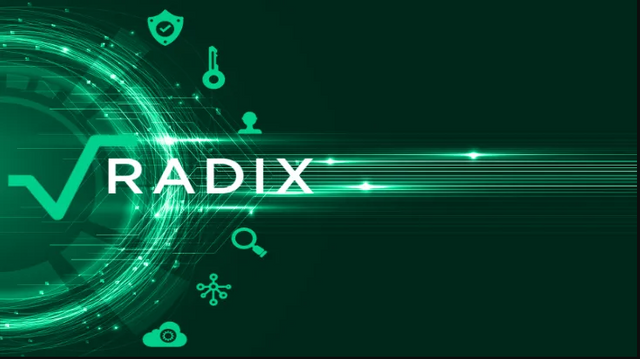Recap After E-Radix Token Sale: Radix to Transform the Defi Sector
Radix represents a next-gen decentralized layer 1 protocol designed to serve the DeFi market by helping developers overcome a series of technical challenges.
On the 22nd of October, Radix DLT completed its public token sale, raising over $12.5 million by selling all the available coins. This is a huge success for a long-awaited project. Even more so considering the tokens were sold out within two weeks from its Oct 8 token sale launch.
The premature end of the sale is a sign of the enormous trust that the crypto community and investors have in the project. According to Radix, participants will be able to exchange these ERC20 tokens on a 1:1 basis once the mainnet launches.
How is the Radix protocol planning to transform the DeFi sector?
Due to its revolutionary technology, Radix is one of the most promising and much-anticipated blockchain projects of 2020. Its primary focus is to solve a few of the pressing issues derailing the mass adoption of decentralized finance.
Currently, the DeFi space is in jeopardy as the Ethereum network has become very congested due to its scalability problems. Despite being the preferred protocol, Ethereum has been overwhelmed by this continuous expansion.
Its proof-of-work consensus algorithm has failed to accommodate the ever-growing list of new DeFi projects. While Ethereum will attempt to fix its scalability issues by releasing the Serenity update, it might be too late.
In response to this growing concern, Radix has developed Cerberus, a ground-breaking consensus algorithm, specifically designed to accommodate the DeFi market. Cerberus serves as a layer 1 protocol, enabling inventors, entrepreneurs, and anyone with an idea to easily build DeFi products.
Besides its consensus algorithm, Radix has two other critical layers that provide additional tools for creating long-lasting solutions within the DeFi space. The application layer is built on top of Cerberus to facilitate the efficient development of decentralised products.
The ecosystem layer forms the third part of Radix’s critical DeFi stack. Combined, these three layers form a revolutionary system designed to create tools that drive the next generation of financial technology in a scalable, simple, and easy to use manner.
Unlike other blockchain protocols that require developers to build their platforms from scratch, Radix offers a simpler alternative. The quick assembly of DeFi applications is guaranteed through the on-ledger component library.
This solution works in a very effective way, as developers are incentivized to create useful tools that can be deployed across multiple applications. These tools help projects deliver faster-to-market applications, thus minimizing expenses, saving time, and reducing on-ledger running costs.
How Radix will end DeFi liquidity problems
Despite its highly-innovative projects, the potential of the DeFi space is seriously inhibited by liquidity problems. Only a small amount of value has been locked into existing projects, as assuring and managing liquidity is proving to be difficult.
According to DefiPulse, this amount stands at slightly over $10 billion. While fairly low, it shows a remarkable year-to-date growth of over 200%. With DeFi touted to take over the global financial landscape, this figure is quite dismal and projects may find it difficult to conduct their operations efficiently.
Consequently, there is a need to initiate measures capable of enhancing liquidity. In doing so, the overall service provision will be boosted and DeFi will be catapulted to the forefront of the financial market.
Radix is ahead of the curve in this respect, thanks to its ecosystem layer that is aimed at improving DeFi liquidity. This third pillar will help unlock billions of dollars in liquidity for use across the entire sector. The ecosystem layer is built to enable easy and inexpensive movements of liquidity across DeFi applications on various blockchain protocols.
In addition, the Radix network is establishing a decentralised developer incentive program to accelerate the process of creating new solutions. This is aimed at creating a huge catalogue of components, unmatched by any other existing blockchain network. By leveraging these components, developers will effortlessly build innovative projects.
Based on these aspects, it only makes sense that developers worldwide are excited to rely on Radix. Investors are well-aware of this, thereby explaining the huge success of the recent token sale.
Auditing Radix’s tokenomics and the recent token sale
As part of its token sale, over 642 million ERC-20 E-Radix tokens were sold. A 1:1 basis exchange will occur once the mainnet is live. As mentioned earlier, the sale had to be cut short, since Radix quickly ran out of sellable tokens due to considerable investor interest.
Radix has implemented various safeguards to avoid any sharp post-ICO sell-offs by locking the sold tokens in dependence on their price. Only 1% were initially unlocked, while other tranches will be freed once price thresholds and predetermined waiting periods are met. This unlocking schedule applies to all E-RADIX tokens, as well as RADIX tokens, which will receive a separate unlocking schedule after the mainnet launch.
Wrapping things up
While it’s difficult to accept that one-day Ethereum will cease to serve as the network infrastructure for DeFi projects, it’s important to look towards the future. Given Radix’s big plans, it has become quite likely that this protocol will solve many of the technical difficulties that the DeFi market is currently dealing with. Investors seem to agree with this statement, especially when considering the recent success of the Radix token sale.

21.00% | From: @enterpriseblock!
Looking for a new project/investment?
This post was resteemed by @steemvote and received a 51.42% Upvote. Send 0.5 SBD or STEEM to @steemvote
Looking forward to the transformation.